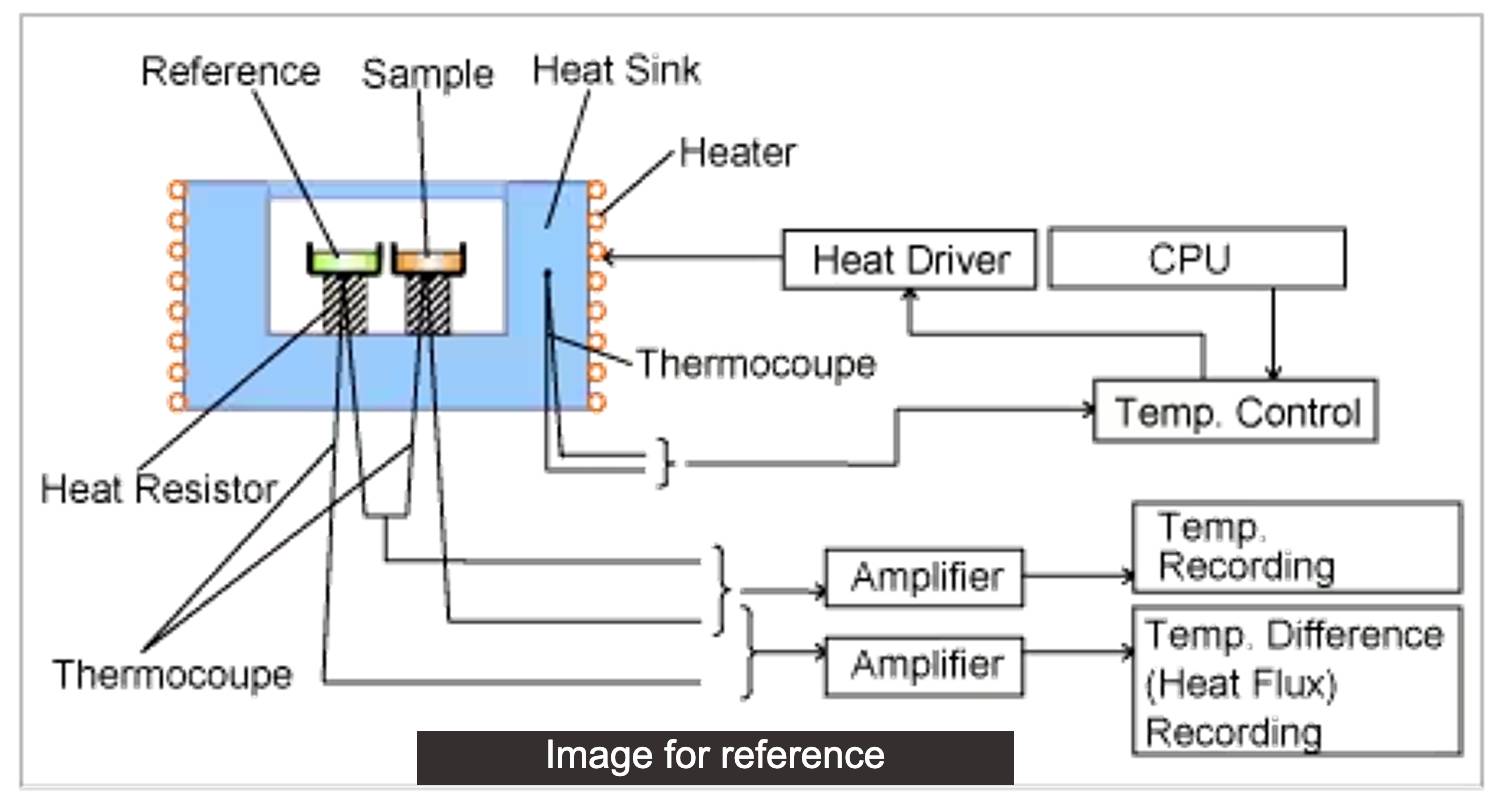Differential Scanning Calorimetry (DSC) - TDSC Kinetics: Unlocking Thermal Analysis Insights
Differential Scanning Calorimetry (DSC) is a powerful technique in thermal analysis that provides valuable information about the physical and chemical properties of materials. By measuring the heat flow into or out of a sample as a function of temperature or time, DSC enables researchers to gain insights into various thermal phenomena, such as phase transitions, glass transitions, reactions, and decomposition processes. In this blog post, we will explore the application of Time-Domain Scanning Calorimetry (TDSC) in kinetic analysis, along with example illustrations, to showcase the potential of this advanced technique.
DSC Fundamentals
Before diving into TDSC kinetics, let's briefly review the basic principles of DSC. DSC measures the temperature difference (∆T) between the sample and reference as a function of time or temperature. The sample and reference are simultaneously heated or cooled under controlled conditions. As the sample undergoes thermal events, such as phase transitions or reactions, it releases or absorbs heat, leading to a detectable change in ∆T.
Kinetic Analysis with TDSC
Traditional DSC provides valuable information about the thermal behavior of materials. However, it often lacks the ability to directly determine the kinetics parameters, such as activation energy, reaction rate constants, and reaction orders. This is where Time-Domain Scanning Calorimetry (TDSC) comes into play. TDSC combines DSC with mathematical models to extract kinetic parameters from the experimental data.
Benefits of TDSC Kinetics: TDSC kinetics offers several advantages over conventional DSC for kinetic analysis:
Enhanced Sensitivity: TDSC can detect even subtle thermal events with higher sensitivity due to improved signal-to-noise ratio and resolution.
High-Speed Analysis: TDSC can rapidly measure the heat flow as a function of time, enabling the study of fast reactions or processes.
Model-Based Analysis: TDSC employs various mathematical models, such as the Kissinger, Ozawa-Flynn-Wall, and Coats-Redfern methods, to extract kinetic parameters from the experimental data.
Example Illustrations: To better understand the potential of TDSC kinetics, let's consider two examples:
a. Polymer Degradation: Suppose you are studying the thermal degradation of a polymer using TDSC. By subjecting the polymer sample to a heating ramp, you can observe the exothermic peak corresponding to the degradation process. By applying a suitable kinetic model to the TDSC data, you can determine the activation energy and reaction order, providing valuable insights into the degradation mechanism.
b. Crystallization Kinetics: Another application of TDSC kinetics is the study of crystallization processes. By cooling a supercooled liquid or an amorphous sample, you can observe the endothermic peak associated with the crystallization event. The TDSC data, coupled with appropriate kinetic models, can provide information about the nucleation and growth rates, as well as the activation energy of crystallization.
Data Analysis and Interpretation: Analyzing TDSC kinetics data involves fitting experimental data to suitable kinetic models using software tools specifically designed for this purpose. These tools can provide estimates for kinetic parameters, such as activation energy, reaction rate constants, and reaction orders. Validating the accuracy of the kinetic models often involves comparing experimental data at different heating rates or isothermal conditions.
Let's conclude: Differential Scanning Calorimetry (DSC) combined with Time-Domain Scanning Calorimetry (TDSC) kinetics analysis is a powerful tool for studying thermal phenomena and extracting valuable kinetic parameters. TDSC offers enhanced sensitivity, high-speed analysis, and model-based interpretations. By applying TDSC kinetics to various materials and processes, researchers can gain deeper insights into the thermal behavior and kinetics of complex systems. As TDSC continues to evolve, it holds great promise for advancing fields such as materials science, pharmaceuticals, and polymer research.
Note: When performing DSC or TDSC experiments, it is essential to carefully design experiments, select appropriate heating rates or isothermal conditions, and use suitable calibration standards and reference materials to ensure accurate and reliable results.

